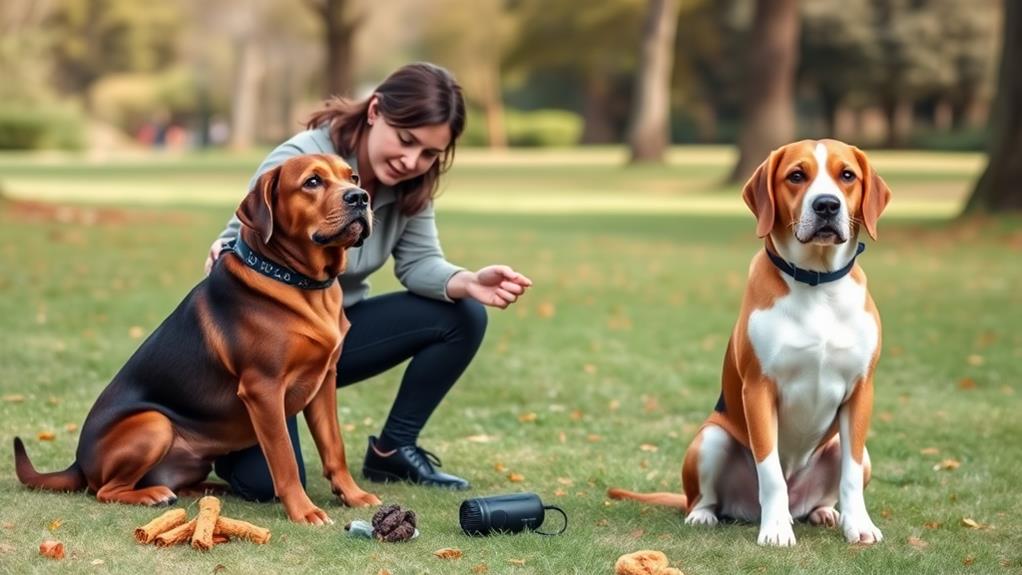To train your dog effectively, start with basic commands like "sit," "stay," and "come." Use positive reinforcement by rewarding good behavior with treats or praise. Consistency is key; make sure everyone in your household follows the same cues. Establish a routine for meals, bathroom breaks, and training sessions to create a sense of security for your pup. Socialize your dog early by exposing them to different environments. Use clicker training for clear communication. Keep training sessions short, manage distractions, and practice patience. If needed, seeking professional help can make a significant difference. There's plenty more to explore on these training techniques!
Start With Basic Commands
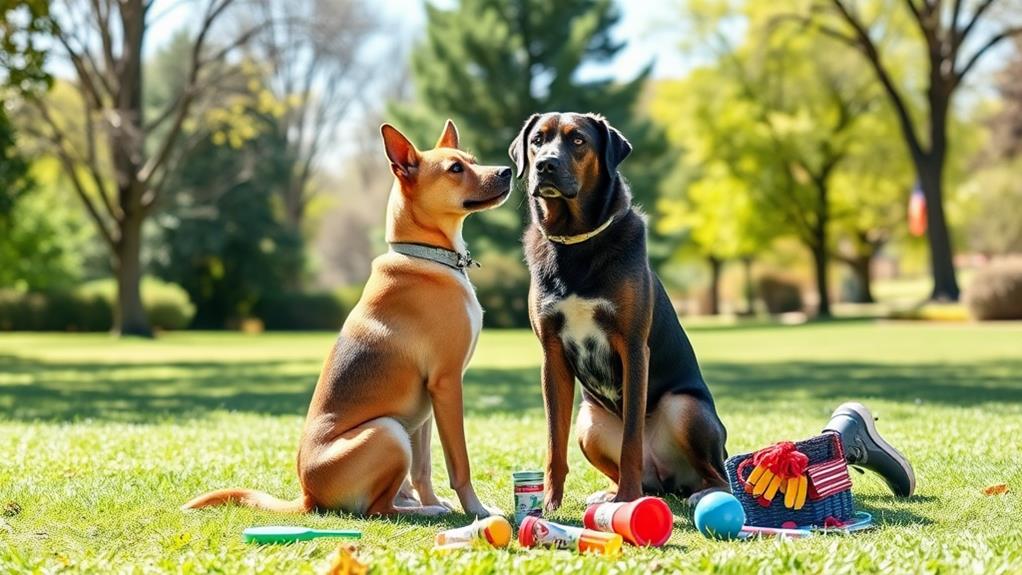
When you begin training your dog, mastering basic commands is essential for building a strong foundation. These commands, such as "sit," "stay," "come," and "down," aren't just useful; they also establish communication between you and your furry friend. Start by choosing a quiet, distraction-free environment where your dog can focus on you.
Begin with "sit." Hold a treat above your dog's nose, then slowly move it back over their head. As their head rises, their bottom will lower. As soon as they sit, say "sit" and reward them with the treat. Repeat this process until they understand the command.
Next, move to "stay." Ask your dog to sit, then open your palm toward them while saying "stay." Take a step back, and if they stay put, reward them. Gradually increase the distance and duration.
For "come," start with your dog on a leash. Say "come" while gently pulling the leash towards you. When they approach, praise them.
Use Positive Reinforcement
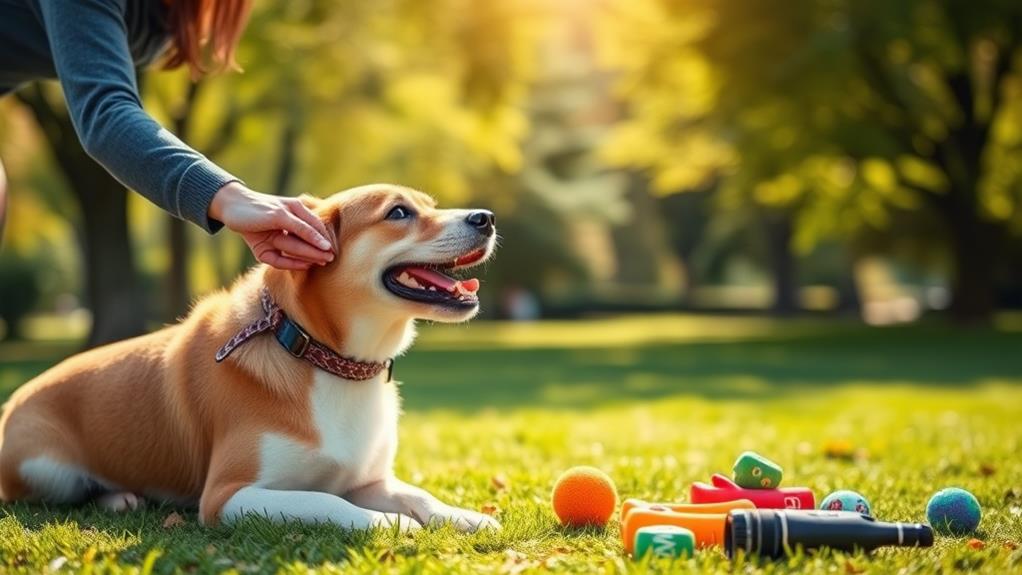
Positive reinforcement is a powerful tool in dog training that helps strengthen the bond between you and your pet. This method encourages desired behaviors by rewarding your dog with treats, praise, or playtime whenever they successfully perform a command or exhibit good behavior. When you use positive reinforcement, your pup learns to associate specific actions with positive outcomes, making them more likely to repeat those actions in the future.
Remember to reward your dog immediately after they perform the desired behavior. This timing helps them connect the action with the reward, ensuring they understand what they did right. Keep your rewards varied; while treats are effective, mixing in verbal praise or a favorite toy can keep things interesting for your pup.
It's essential to stay enthusiastic when praising your dog. Your excitement reinforces their good behavior and makes training sessions more enjoyable for both of you. If your pup isn't responding as expected, don't get frustrated. Instead, reassess your approach and consider adjusting your rewards or the commands you're using. Positive reinforcement not only promotes good behavior but also fosters a trusting, loving relationship between you and your furry friend.
Be Consistent With Training
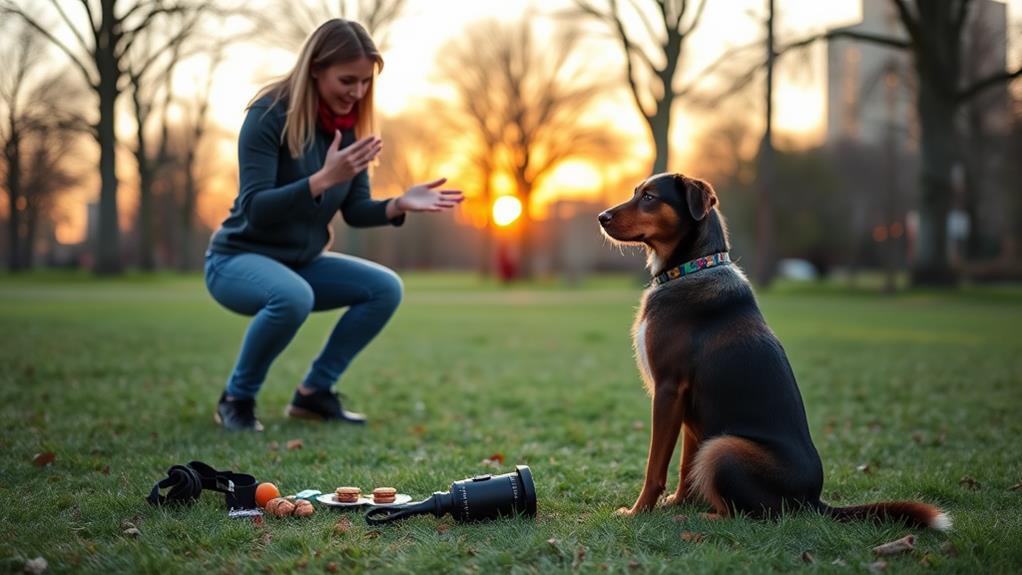
Consistency is essential in dog training, as it helps your pet understand what's expected of them. When you use the same commands and cues every time, your dog learns to associate specific words with actions. For instance, if you say "sit," always use that command instead of mixing it up with "sit down" or "take a seat." This clarity makes it easier for your dog to grasp what you want.
Additionally, guarantee that everyone in your household is on the same page. If one person allows your dog to jump on them while another discourages it, your pup will be confused about the behavior you're trying to reinforce. Consistent rules make training more effective and help your dog feel secure.
When rewarding your dog, be consistent with the timing and type of reward. If you praise or treat them for good behavior, do it immediately after they comply. This reinforces the behavior you want to see. Remember, consistency isn't just about commands; it's about your expectations, rewards, and corrections. By maintaining a steady approach, you'll build trust and clarity, leading to a well-behaved pup.
Establish a Routine
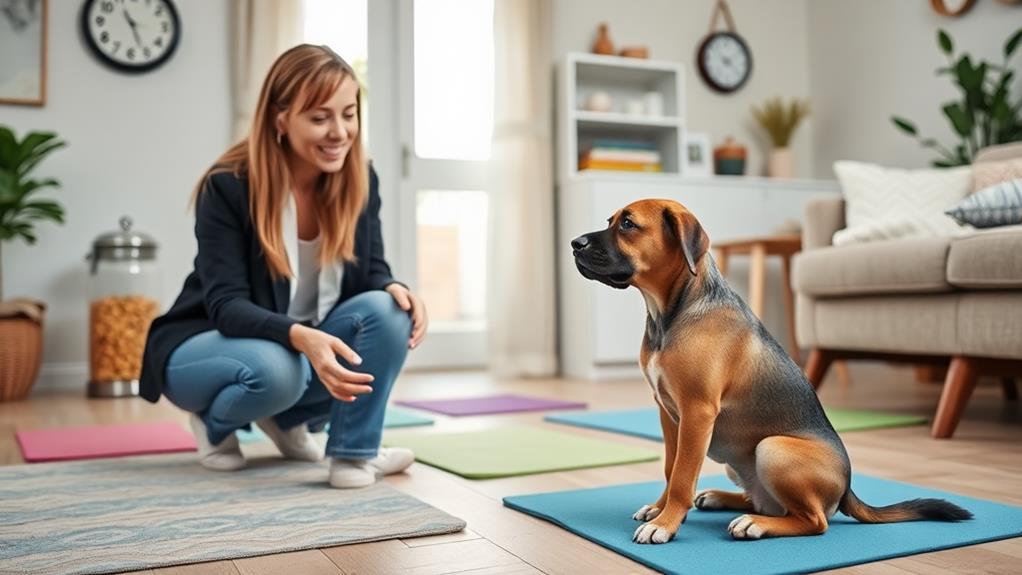
Creating a daily routine for your dog not only helps them feel secure but also reinforces training habits. When your pup knows what to expect each day, they're less likely to feel anxious or act out. A structured schedule provides consistency, which is essential for effective training.
Regular Feeding Times: Stick to specific meal times to promote good digestion and reduce begging behavior.
Consistent Walks: Take your dog out at the same times daily for exercise and bathroom breaks.
Scheduled Training Sessions: Dedicate time each day to practice commands and tricks, reinforcing their learning.
Playtime and Relaxation: Balance active play with quiet time to help your dog unwind and feel secure.
Socialize Your Dog Early
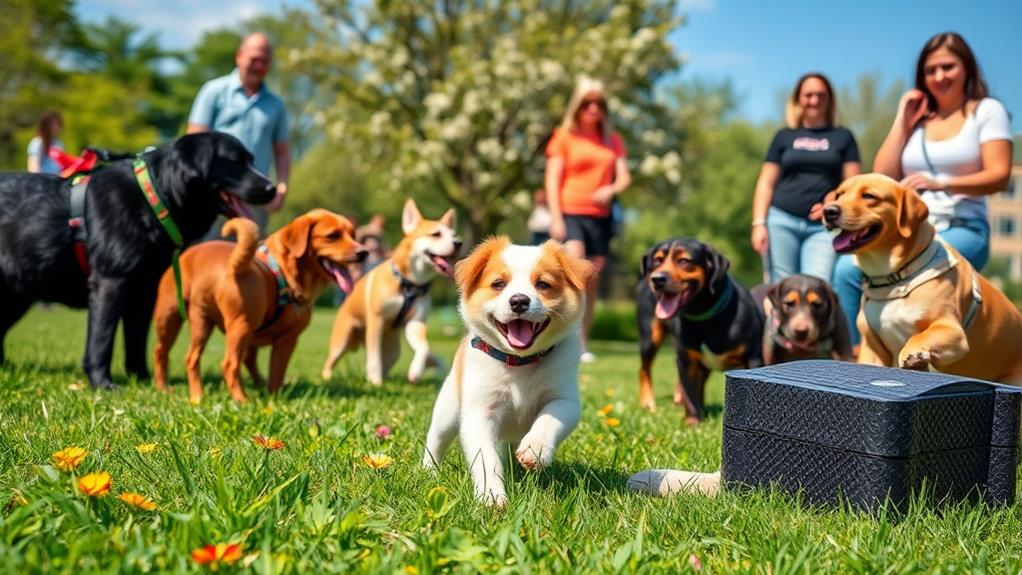
Establishing a routine not only helps your dog feel secure but also sets the stage for effective socialization. Early socialization is vital for your pup's development, helping them become well-adjusted and confident. Introduce your dog to various environments, people, and other animals during their critical socialization period, which typically lasts until they're about 16 weeks old.
Make these experiences positive and rewarding by using treats and praise. This will reinforce good behavior and help your dog form positive associations. Remember, the goal is to expose your pup to as many different situations as possible without overwhelming them.
| Activity | Purpose |
|---|---|
| Puppy Playdates | Develops social skills with peers |
| Visits to Pet Stores | Exposes to new sights and sounds |
| Walks in the Park | Encourages interaction with other dogs |
| Car Rides | Familiarizes with travel and new places |
| Meeting Different People | Reduces fear of strangers and various ages |
Keep Training Sessions Short
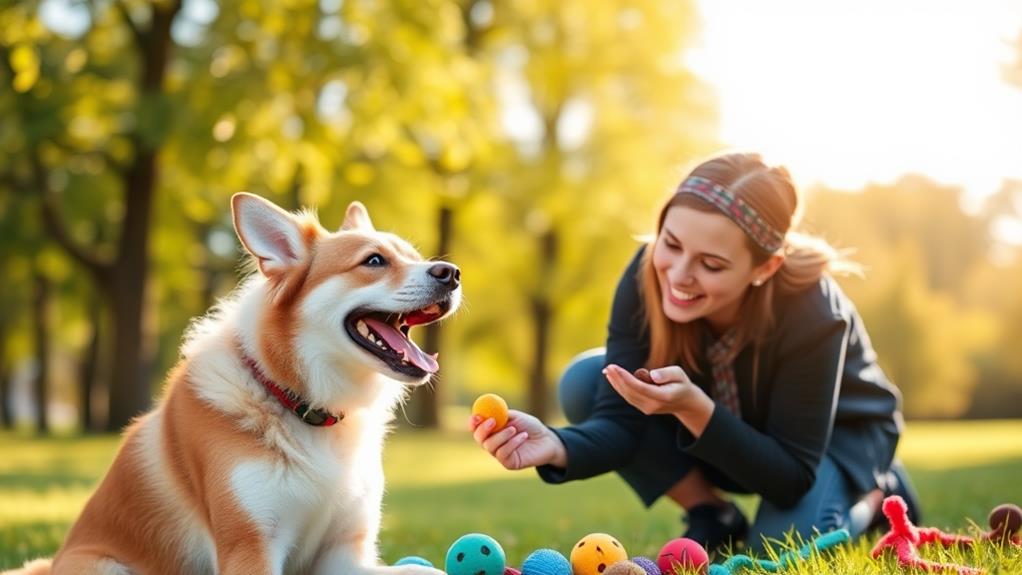
Keeping training sessions short is essential for maintaining your dog's focus and enthusiasm. Dogs, like humans, can get bored or overwhelmed during lengthy training. By keeping sessions between 5 to 10 minutes, you guarantee that your pup stays engaged and retains what they learn.
Choose a distraction-free environment: Find a quiet spot where your dog can concentrate without interruptions.
Use high-value treats: Keep your dog motivated with tasty rewards they love.
End on a positive note: Always finish with a successful command to boost your dog's confidence.
Practice regularly: Short, consistent sessions are more effective than infrequent longer ones.
Utilize Clicker Training
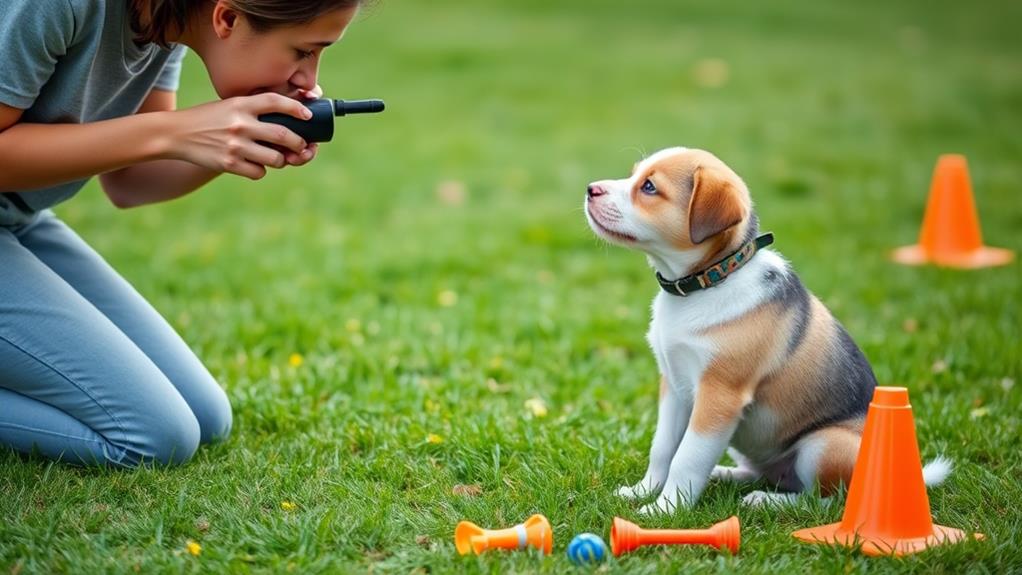
Clicker training is a powerful tool that can enhance your dog's learning experience. This method uses a distinct sound to mark the exact moment your dog performs a desired behavior, making it clear what you want. By pairing the click with a treat, you reinforce that behavior, which helps your pup learn faster.
Here's a quick overview of the clicker training process:
| Step | Description |
|---|---|
| 1. Choose a Clicker | Select a clicker that feels comfortable to use. |
| 2. Introduce the Click | Let your dog associate the click with a treat. |
| 3. Click for Good Behavior | Click immediately when your dog performs the desired action. |
| 4. Add Commands | Start using verbal commands alongside clicking. |
To get started, find a quiet space and practice with simple commands like "sit" or "stay." Remember, consistency is key! Use the clicker each time your pup does something right, and soon enough, they'll associate the sound with a reward. This positive reinforcement will motivate your dog and make training sessions enjoyable for both of you. Happy training!
Manage Distractions
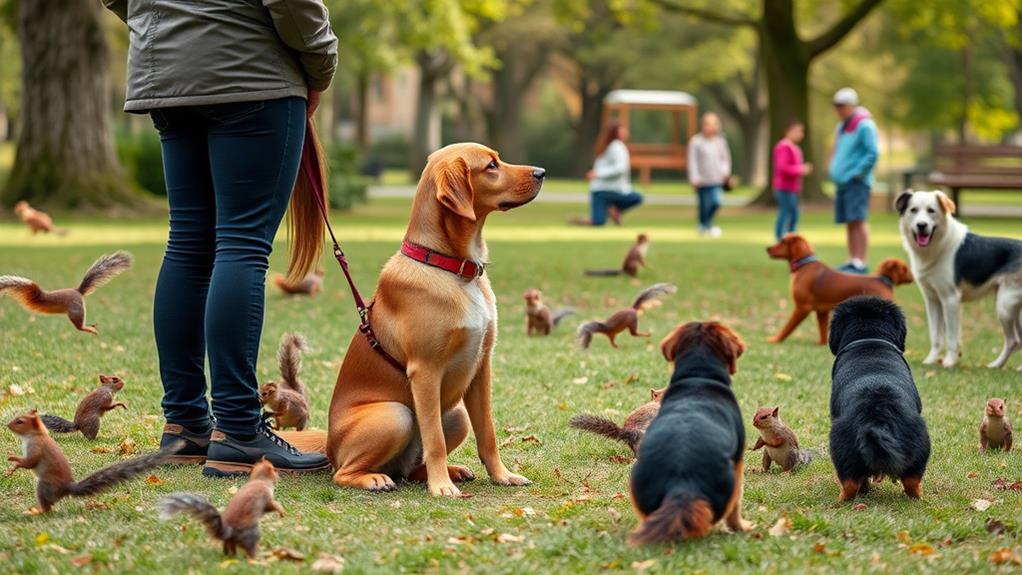
When training your dog, managing distractions is imperative for maintaining focus and ensuring effective learning. Dogs can easily become sidetracked by their surroundings, so it's essential to create an environment that minimizes interruptions.
Choose a quiet location: Start in a calm space away from loud noises or other animals.
Use high-value treats: Reward your dog with treats they can't resist, keeping their attention on you.
Gradually increase distractions: Once your pup masters a command in a quiet setting, slowly introduce distractions to build their focus.
Practice at different times: Train when your dog is most alert and ready to learn, making it easier to maintain focus.
Practice Patience and Persistence
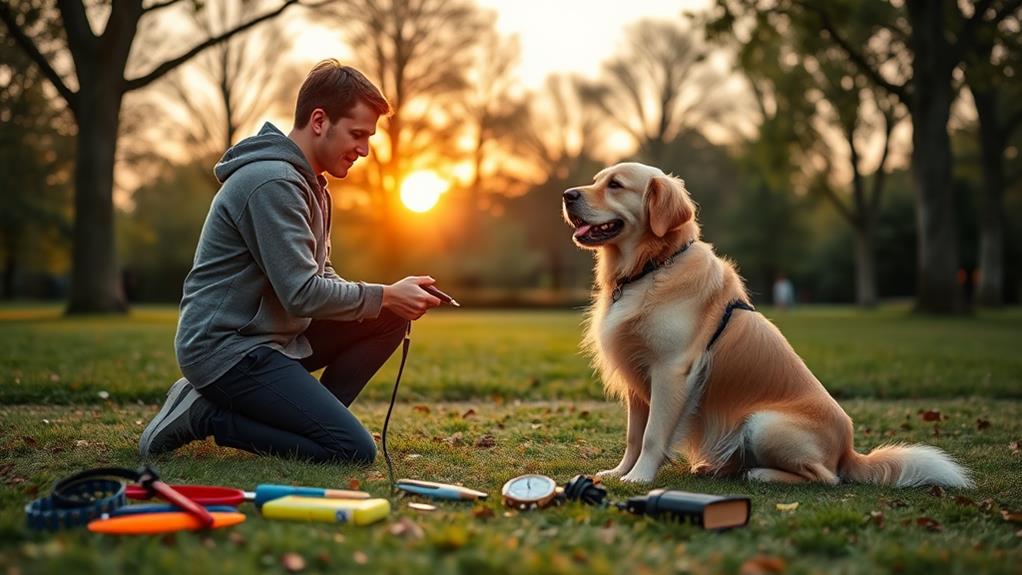
How can you expect your dog to learn new commands overnight? Training takes time, and your pup won't master everything in a day. Diligence is essential. When your dog doesn't pick up a command right away, don't get frustrated. Instead, take a deep breath and try again. Remember, you're building a bond through this process, and every interaction matters.
Persistence is just as important. Regular practice helps reinforce what your dog has learned. Short, consistent sessions—about five to ten minutes—are often more effective than longer, drawn-out training sessions. Repetition builds familiarity, so don't shy away from going over the same command multiple times.
Celebrate small victories! If your dog follows a command correctly, reward them with praise or a treat. This positive reinforcement keeps them motivated and keen to learn. If they struggle, adjust your approach rather than giving up.
Training is a journey, not a race. By being patient and persistent, you're setting your dog up for success. Stick with it, and you'll see progress over time, leading to a well-behaved pup that you can be proud of.
Seek Professional Help if Needed
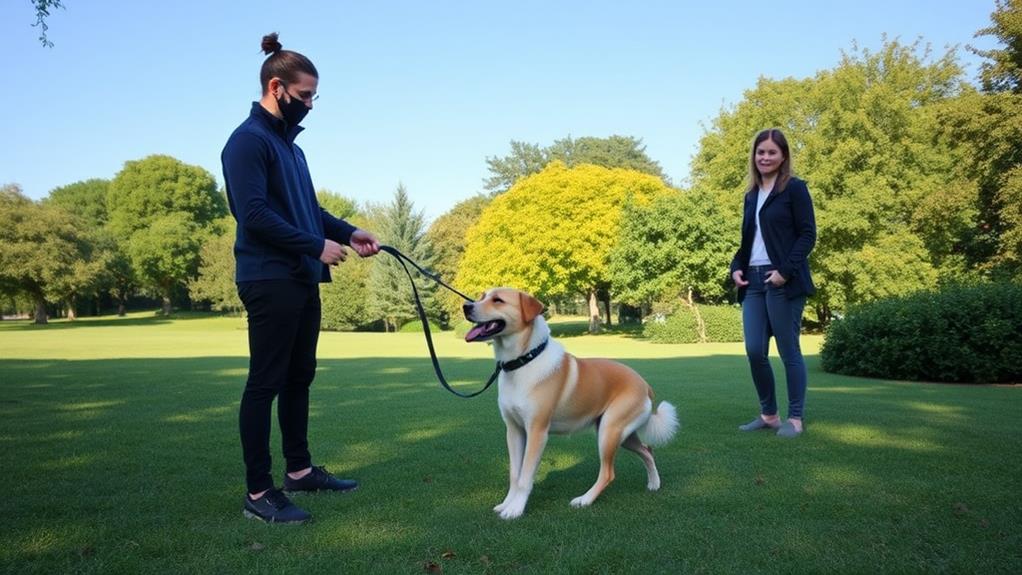
Training your dog can sometimes feel overwhelming, and that's perfectly okay. You're not alone in this journey. If you find yourself struggling despite your best efforts, seeking professional help can make a significant difference. Trainers bring expertise, patience, and tailored strategies to help you and your pup thrive.
Consider reaching out to a professional if you notice:
- Your dog consistently misbehaves despite training efforts
- You're unsure how to address specific behavioral issues
- You feel frustrated or stressed during training sessions
- You want to learn advanced techniques for better results
Professional trainers offer various services, from group classes to one-on-one sessions, ensuring you get the support you need. They not only help with basic obedience but can also tackle behavioral problems like aggression or anxiety. Working with a trainer allows you to gain insights into your dog's behavior, enhancing your bond and ensuring a happy, well-adjusted pet.
Frequently Asked Questions
How Do I Choose the Right Training Collar for My Dog?
To choose the right training collar for your dog, consider their size, temperament, and training needs. Research different types, like flat, martingale, or electronic collars, and consult professionals to guarantee you make an informed decision.
What Age Is Best to Start Training My Puppy?
Starting training as early as possible is vital; it's like planting a tree that'll grow strong. Begin when your puppy's around eight weeks old. You'll foster good habits that'll last a lifetime with consistent practice.
Can Older Dogs Learn New Commands Effectively?
Older dogs can learn new commands effectively. With patience and consistent practice, you'll see progress. Focus on positive reinforcement, keeping sessions short and engaging. Your dog's enthusiasm will surprise you as they pick up new skills!
How Do I Handle a Stubborn or Disobedient Dog?
When you're dealing with a stubborn dog, stay patient and consistent. Use positive reinforcement and break commands into smaller steps. Keep training sessions short and fun, and always reward your pup for progress, no matter how small.
What Should I Do if My Dog Is Afraid of Training?
If your dog shies away from training, try using treats during a calm, familiar moment. For instance, when you're relaxing together, gently introduce basic commands with positive reinforcement, helping your pup feel safe and engaged.
Conclusion
By weaving these training tips into your daily routine, you'll transform your pup from a wild whirlwind into a well-mannered companion. Think of your training journey as planting seeds in a garden; with patience, consistency, and love, you'll watch them blossom into a beautiful bond. Embrace the challenges and celebrate the victories, no matter how small. Remember, every wag of the tail is a step forward, and soon, you'll have a loyal friend by your side.

